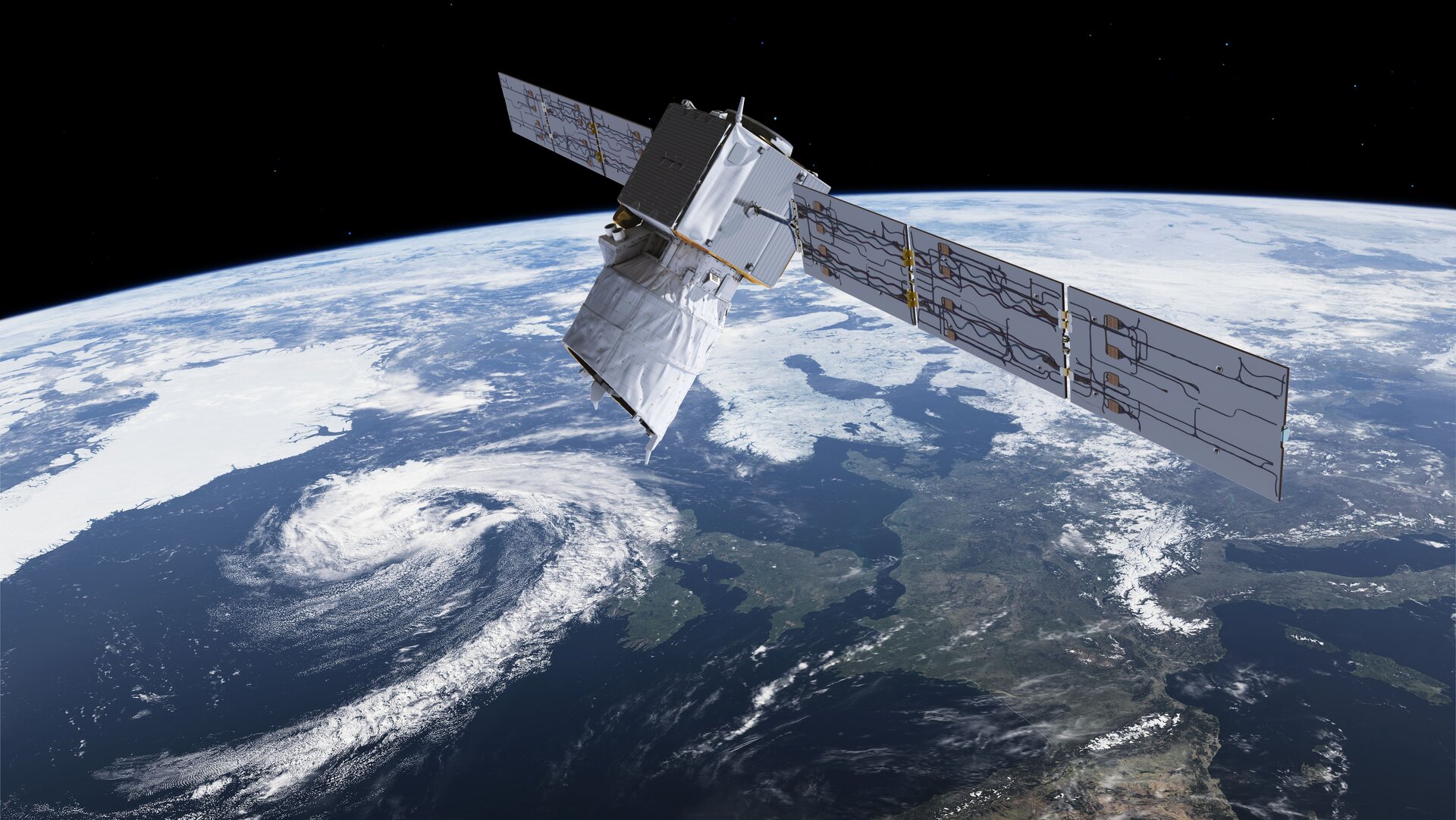
This week will see a first-of-its-kind operation to guide a dead and disused satellite back to Earth safely. The mission will pave the way for the safe return of other space-based equipment in the future.
The European Space Agency (ESA) plans to help its Aeolus spacecraft officially reenter Earth's atmosphere during the evening of Friday (July 28). The procedure to bring it back down to our planet, however, begins on Monday (July 24).
Aeolus has been orbiting Earth since 2018, when it became the first spacecraft to measure our planet's winds from space. The mission has far outlived its planned operational lifetime of one year, but was finally shut down after almost completely exhausting its fuel in early July 2023. Since then, the spacecraft has been falling toward Earth with gathering speed. By Monday, it should have reached an altitude of 174 miles (280 kilometers) over Earth, allowing ESA scientists to start the pioneering mission to bring Aeolus back down safely using a tiny bit of fuel that remains with the craft.
"This is quite unique, what we're doing. You don't find really examples of this in the history of spaceflight," head of ESA's Space Debris Office Holger Krag said during a press briefing on Wednesday, July 19. "This is the first time to our knowledge, we have done an assisted re-entry like this.
Related: Australian Space Agency investigating possible rocket debris found on beach
During the press briefing, ESA Spacecraft Operations Manager Isabel Rojo Escude-Cofiner explained precisely how the operation to bring Aeolus down to Earth will proceed.
"This will start with an initial set of maneuvers that will be executed on Monday to lower the altitude from 174 miles (280 km) which the spacecraft should have by then, to 155 miles (250 km) and to put it in an elliptical orbit," Escude-Cofiner said. "If everything goes according to plan, this will be then followed three days later by another set of maneuvers which is intended to lower it even further from 155 miles (250 km) to 93 miles (150 km) altitude."

All of this is preparation for the last day of operations on Friday, when ESA scientists will give Aeolus given its final commands. The craft will then perform maneuvers to bring its altitude down to around 62 miles (100 km) over Earth. Five hours later, the craft will reenter Earth's atmosphere, engaging in a flight descent corridor over the Atlantic Ocean with the ESA tracking it by radar as it falls.
The maneuvers intended to lower the craft will be retrograde in nature, meaning the thrusters on Aeolus will be firing in the opposite direction of its orbit around Earth.
The risk of clashing with other spacecraft during maneuvers is expected to be low because Aeolus orbits Earth in a sparsely populated zone. Still, if such an encounter appears to be a threat, plans are in place to divert Aeolus' descent.
"Before we do any sort of maneuvers, this is all taken into account, and any conjunction risks are evaluated at that point in time," Escude-Cofiner said. "So the deviation from the plan is possible. This is one of the multiple challenges that we will be facing."
Should the operation fail at any point, Aeolus will make the natural, unguided reentry it was originally destined for when it was created. The wind satellite was once dubbed the "impossible mission" because of several challenges ESA had to overcome to make it work in the first place.
A safe return but not for Aeolus itself
To be clear, even if the Aeolus return mission is a complete success, the satellite's safe descent to Earth doesn't exactly mean it returns to the planet in one piece.
At the press conference, ESA scientists explained they expect around 80% of Aeolus to be destroyed as the satellite falls through the atmosphere. The remaining 20% will splash down in the Atlantic and quickly sink, meaning there are no plans to recover any pieces of Aeolus at all.
Krag explained that an 80% to 20% survival ratio for a spacecraft entering the atmosphere is typical of natural descent, so the reentry procedure isn't intended to be "safe" for Aeolus or any of its pieces. Rather, the "safe" aspect of this mission refers to the fact it could help scientists build the groundwork for future missions that will bring other space equipment back to Earth with little risk to property or populations.
This is becoming increasingly important as use of the space environment around Earth burgeons.
"Today, we have 10,000 spacecraft in space, of which 2,000 are not functional. In terms of mass, we are speaking about 11,000 tons," Krag said at the press conference. The ESA scientist added that around 100 tons of human-made space debris reenter Earth's atmosphere each year, with large objects falling back to our planet at a rate of around one per week.
While there have been no major incidents of human-made space junk causing injuries or property damage as of yet, the growing use of orbital space means it could happen one day, and the ESA is taking such a threat very seriously.
Hence, the retired Aeolus satellite's final mission — to build a method of safely guiding other disused craft back to Earth in a controlled way.







